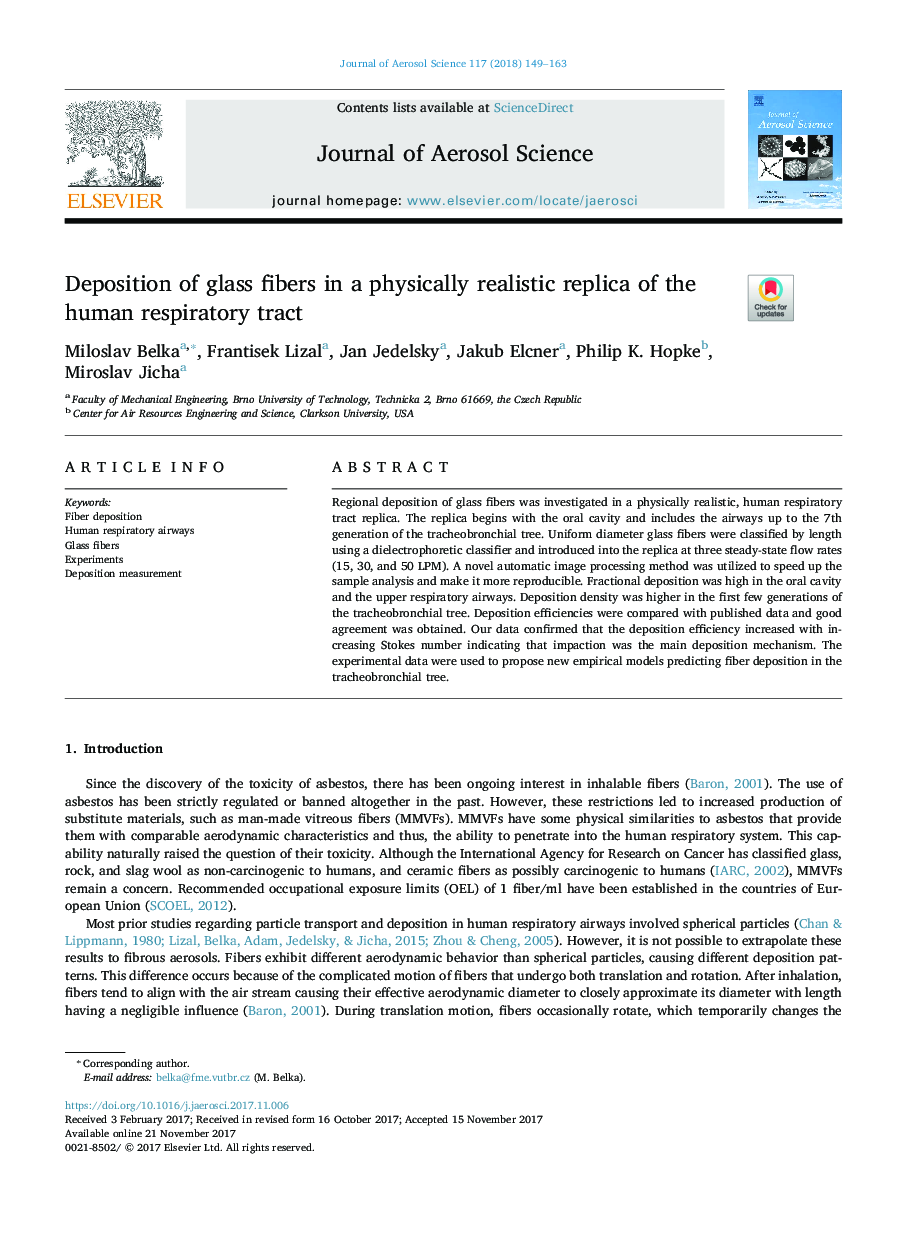| Article ID | Journal | Published Year | Pages | File Type |
|---|---|---|---|---|
| 8865302 | Journal of Aerosol Science | 2018 | 15 Pages |
Abstract
Regional deposition of glass fibers was investigated in a physically realistic, human respiratory tract replica. The replica begins with the oral cavity and includes the airways up to the 7th generation of the tracheobronchial tree. Uniform diameter glass fibers were classified by length using a dielectrophoretic classifier and introduced into the replica at three steady-state flow rates (15, 30, and 50 LPM). A novel automatic image processing method was utilized to speed up the sample analysis and make it more reproducible. Fractional deposition was high in the oral cavity and the upper respiratory airways. Deposition density was higher in the first few generations of the tracheobronchial tree. Deposition efficiencies were compared with published data and good agreement was obtained. Our data confirmed that the deposition efficiency increased with increasing Stokes number indicating that impaction was the main deposition mechanism. The experimental data were used to propose new empirical models predicting fiber deposition in the tracheobronchial tree.
Keywords
Related Topics
Physical Sciences and Engineering
Earth and Planetary Sciences
Atmospheric Science
Authors
Miloslav Belka, Frantisek Lizal, Jan Jedelsky, Jakub Elcner, Philip K. Hopke, Miroslav Jicha,
